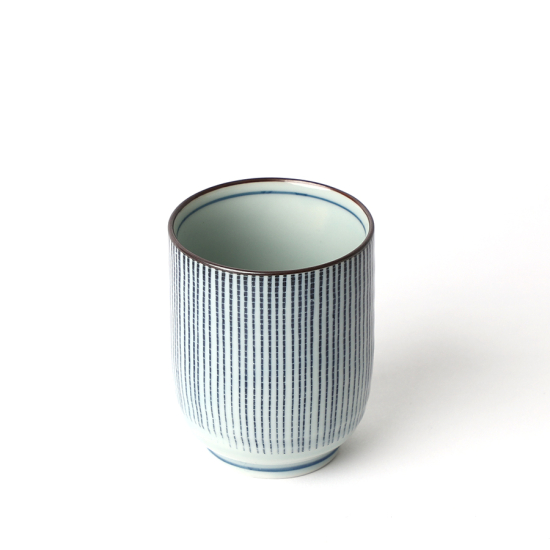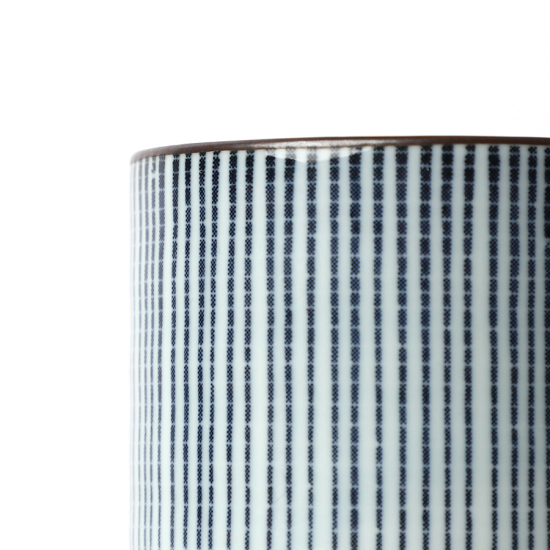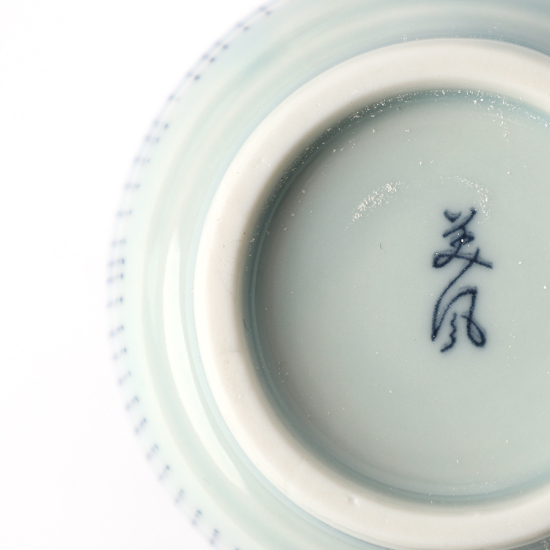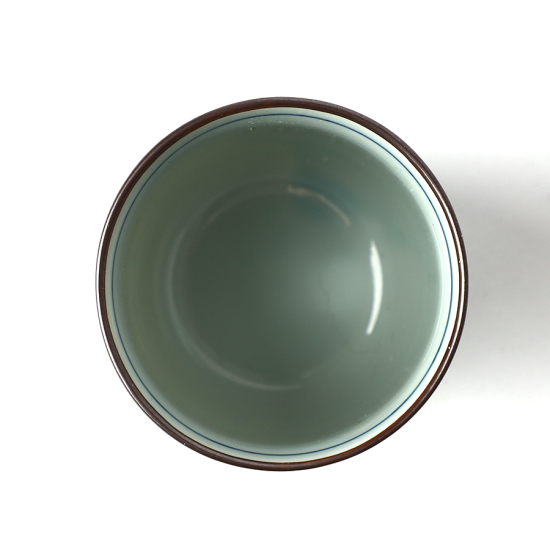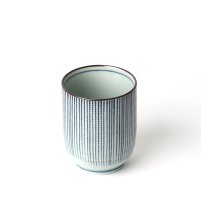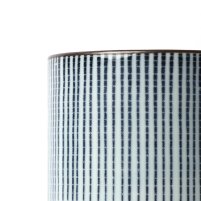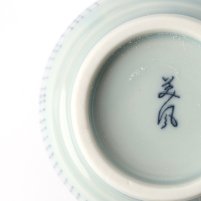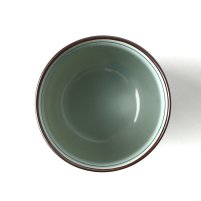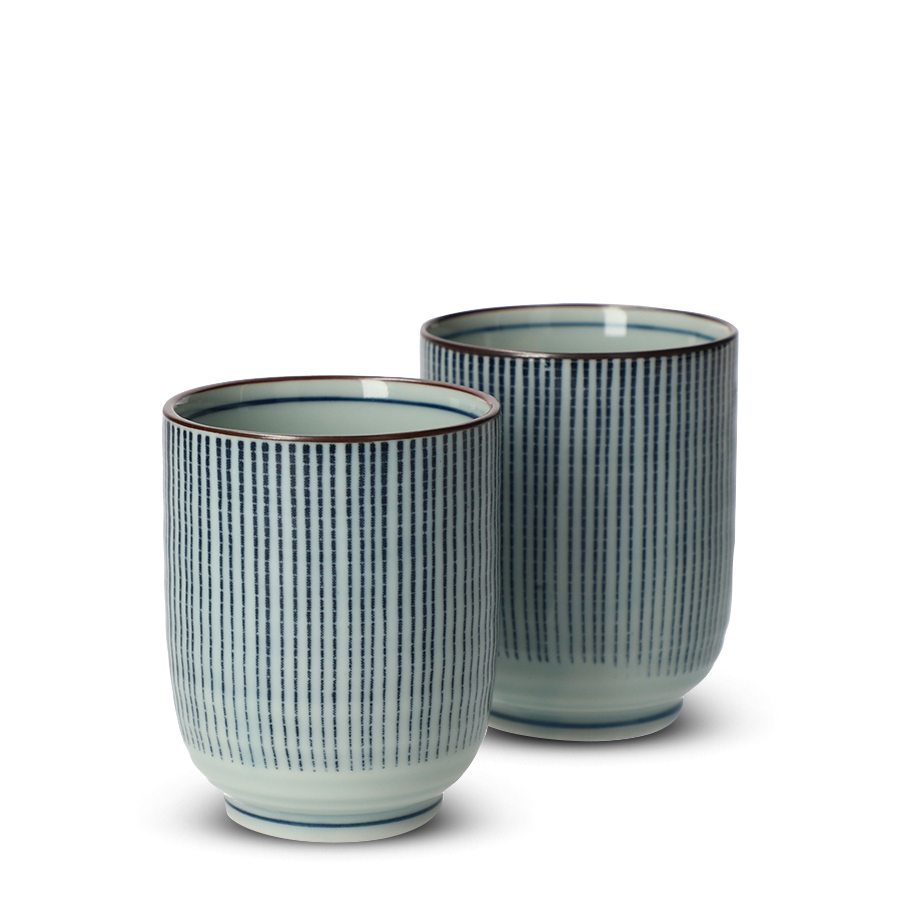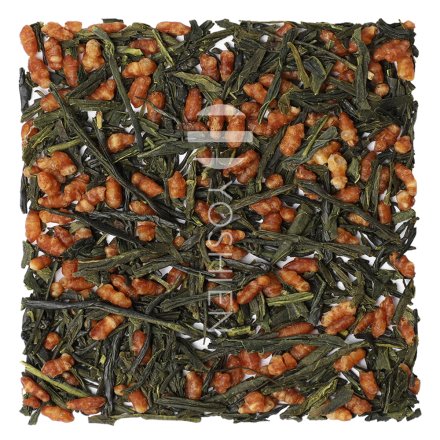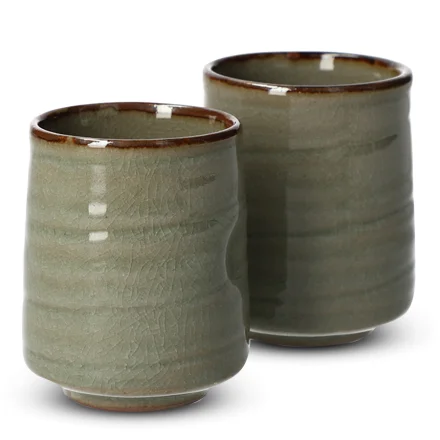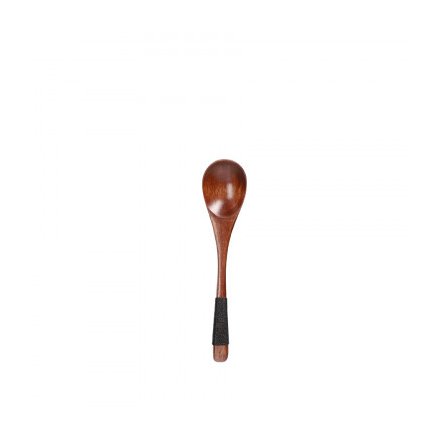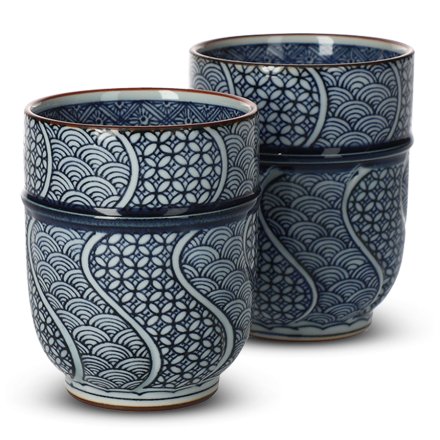Produced in the historic Mino province, present-day Gifu prefecture, Mino-yaki has a long ceramic history dating back to the 11th century, and since the 19th century has specialised in porcelain for everyday crockery. Mino ceramic production developed in correlation with that of Seto, in neighbouring Aichi prefecture, which was the location of one of the legendary Six Ancient Kilns or Rokkoyō (六古窯) of Japan. A variety of styles and glazing techniques were produced in Mino following the Chadō tea ceremony boom in the Momoyama period (1573–1615), including pale yellow Ki-Seto, jet black Seto-guro, off-white Shino and green/black Oribe wares.
Sometsuke 染付け
Japanese blue-and-white pottery is known as Sometsuke, literally “dye applied”, because the colour was likened to traditional indigo-dyed linen. The ceramics are decorated by hand, stencil or transfer-print with a blue pigment, traditionally cobalt oxide, over which a transparent glaze is then applied. Once fired, the underglaze decorations become a vivid shade of blue. This method originated during China’s Song dynasty (960-1279) and is believed to have been perfected around the beginning of the Ming dynasty in the 14th century. Blue-and-white pottery was introduced to Japan at the start of the 17th century in the form of export Tianqi or Ko-Sometsuke ("Old Sometsuke") porcelain from Jingdezhen, which was imitated in the kilns of Arita before spreading to other areas including Kyoto, Seto, Hasami and Mikawachi, each developing their own unique variations of Sometsuke.



